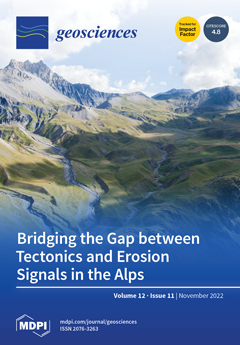The subfamily Leukadiellinae Macchioni and Venturi, 2000 includes the two rare genera
Leukadiella Renz, 1913 and
Renziceras Arkell, 1953. Genus
Leukadiella is characterised by ornamental and structural features unusual to the family Hildoceratidae Hyatt, 1867; for this reason, it has been occasionally grouped with other “odd” representatives of this family, as, for instance,
Frechiella Prinz, 1904 and
Paroniceras Bonarelli, 1893. While
Renziceras comprises only one species, the eleven species currently recognised within
Leukadiella show a noticeably discontinuous variability field; together with rarity of findings, the interpretation of this variability represents a renowned obstacle to their classification and phylogenetic reconstruction. Following an analysis of the morphological characters commonly used for defining
Leukadiella species, a revised taxonomic scheme is herein proposed. Two clusters of characters are defined, based on which two morphologically distinct groups of species are distinguished, referred to as Helenae Group and Ionica Group. The genus name
Leukadiella is maintained for species of the Helenae Group, which are restricted via synonymy to
Leukadiella helenae Renz, 1913 and
Leukadiella jeanneti Renz, 1927. The new genus name
Neoleukadiella gen. nov. is proposed for species of the Ionica Group, which, by analogous limitation, are
Neoleukadiella ionica Renz and Renz, 1946 and
Neoleukadiella gallitellii Pinna, 1965. The reduction in the number of species from eleven to four is consistent with their rarity and limited paleogeographic distribution. The closely related
Renziceras is considered the direct progenitor of
Leukadiella; in turn, the Apennine genus
Cingolites Sassaroli and Venturi, 2010 is proposed as transitional between
Hildaites Buckman, 1921 and
Renziceras. Conversely, the progenitor of
Neoleukadiella remains uncertain, although a possible relationship between
Leukadiella and
Neoleukadiella species is tentatively traced. Finally, some challenging assumptions are made by emphasizing the role of environmental stress in controlling developmental dynamics that may drive striking phenotypic modification, of the kind observed in the Leukadiellinae species.
Full article





